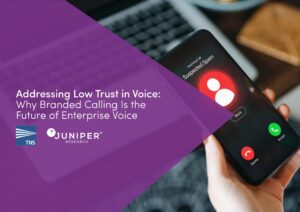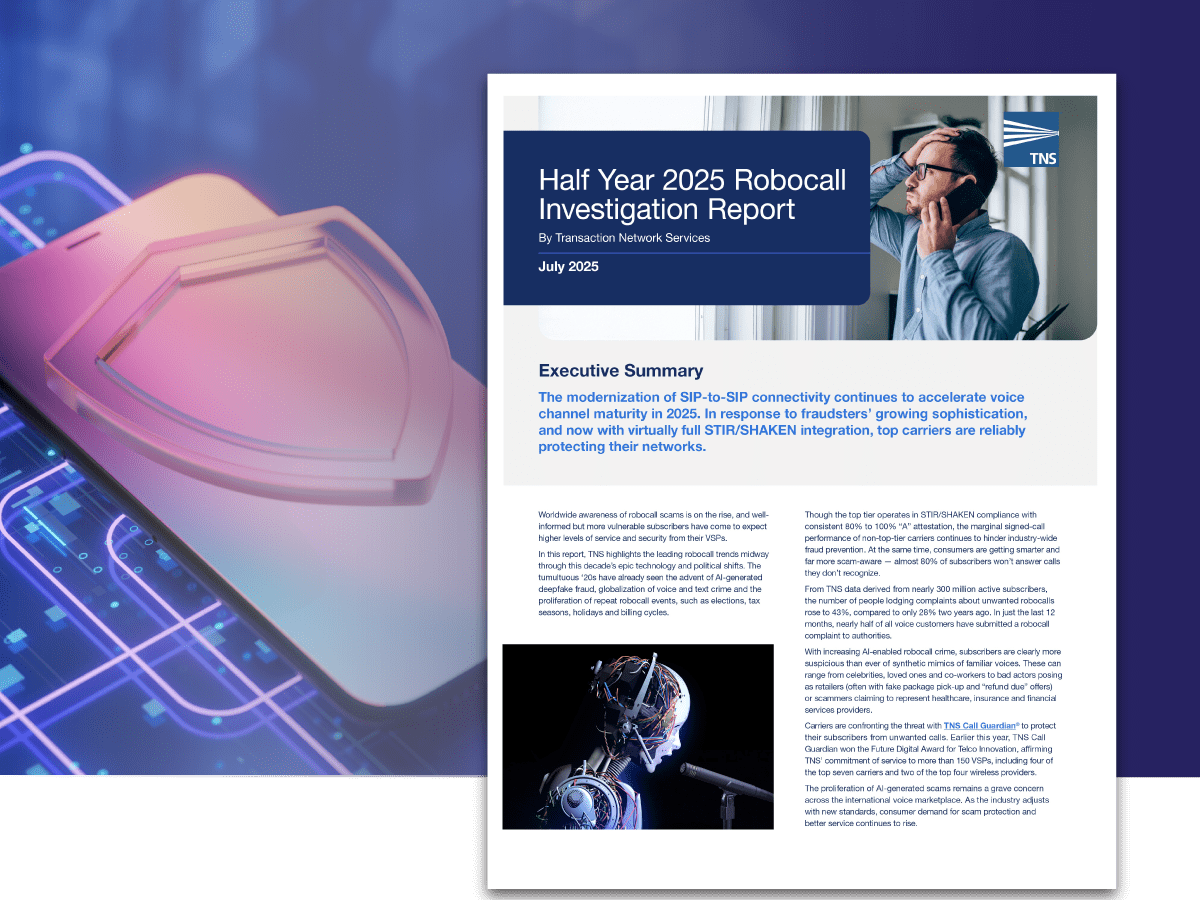SIM Boxing and Other Evolving Tactics Exploit Non-IP Traffic
New data, released today in the Transaction Network Services (TNS) 2025 Half Year Robocall Investigation Report, reveals that bad actors are increasingly able to exploit vulnerabilities within smaller carrier networks that have not fully migrated from legacy to all-IP networks.
Eighty-four percent of all call traffic between top US telecom providers (Verizon, UScellular, T-Mobile, Lumen, Comcast, Charter and AT&T) was signed and verified with STIR/SHAKEN protocols in the first half of 2025 – affirming that tier-1 carriers are maintaining a high success rate protecting their subscribers from unwanted robocalls. But only 21% of calls were signed when originating from non tier-1 carriers.
“Tier-1 operators are delivering consistently high levels of signed call traffic following their migration to SIP networks and STIR/SHAKEN implementation,” said Seth Walton, TNS’ General Manager of Communications Market. “However, our Report data underscores that until more smaller carriers migrate their networks for SIP-to-SIP connectivity, bad actors have a path into launching robocall campaigns. Regulators, policymakers and industry leaders must continue to advance efforts and cost-feasible technologies to facilitate this network migration.”
The latest iteration of TNS’ Robocall Investigation Report also includes several new robocall insights and trends for telecom industry stakeholders to prepare for the remainder of the year:
Tier-1 Operators Face Challenges with Invalid Attestation
Ninety-four percent of call traffic between top carriers was signed with “A-level” attestation. That’s good news, as it demonstrates that these operators have established SIP-to-SIP connections between originating and terminating parties, making it more difficult for robocall bad actors to infiltrate tier-1 networks.
However, authentication challenges are emerging as invalid attestation is occurring more frequently whereby spam calls are being delivered with improperly signed A attestation. Therefore, while some carriers may be signing traffic successfully, further call verification is needed to validate calls and eliminate openings for bad actors.
Smaller Carriers’ Delayed IP Migration Forces FCC Action
Smaller carriers that were able to sign calls maintained strong attestation levels as well: 93% of call traffic that was signed by non–tier-1 carriers included “A-level” attestation.
However, with many smaller carriers struggling to migrate fully to IP networks and Tier-1 carriers’ signed traffic stagnation, bad actors are still able to hide unwanted call traffic. In response, the Federal Communications Commission adopted a Notice of Proposed Rulemaking that will mandate and facilitate stronger call authentication frameworks for non-IP networks.
Top Robocall Scams in the First Half of the Year
One of the most prevalent robocall scams in the first half of the year was an IRS back taxes scam, where bad actors spoofed legitimate IRS numbers to impersonate the agency, claiming the victims owed taxes and threatening them with arrest or prison time due to the alleged tax debts.
SIM boxing (also known as interconnect bypass fraud) has historically been associated with fraudsters seeking to exploit price disparities between local and international call rates. But now, bad actors are using SIM boxes to launch robocall spam campaigns from overseas by leveraging multiple SIM cards to conceal traffic within trusted networks. This attack is difficult for operators to identify and tag, as they trust traffic that originates in their own network.
Other common robocall scams included fund recovery scams, Google Voice scams, solar power scams and precious metal investment scams.
Americans More Proactively Reporting Robocall Activity
Americans are taking a greater initiative to report scam calls. According to recent TNS survey data, 43% of respondents submitted a robocall complaint to their state’s Attorney General, the Federal Trade Commission (FTC), or the Do Not Call Registry in the last 12 months. This represents a significant increase from 2023, when 28% of people submitted a robocall complaint.

TNS Half Year 2025 Robocall Investigation Report
For access to the latest robocall data trends and insights on the top scams targeting Americans this year, download the TNS Half Year 2025 Robocall Investigation Report.




